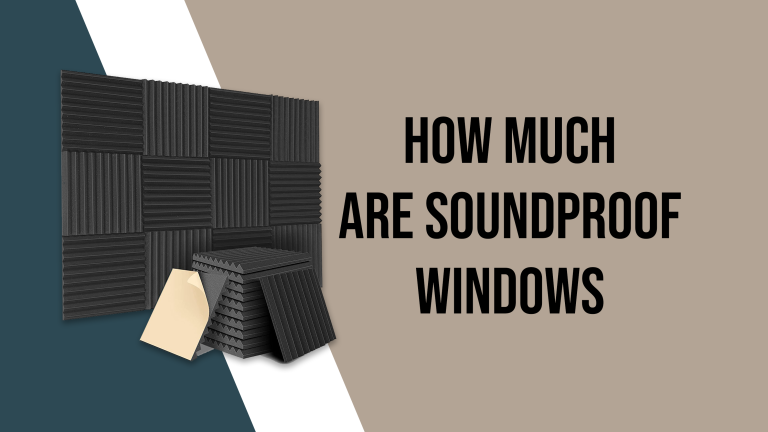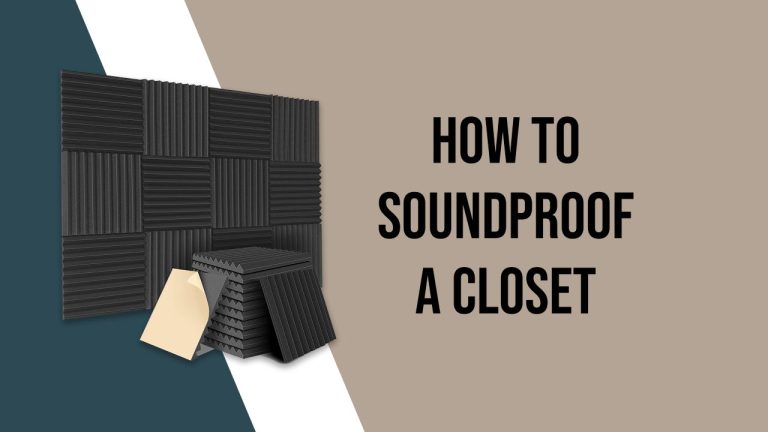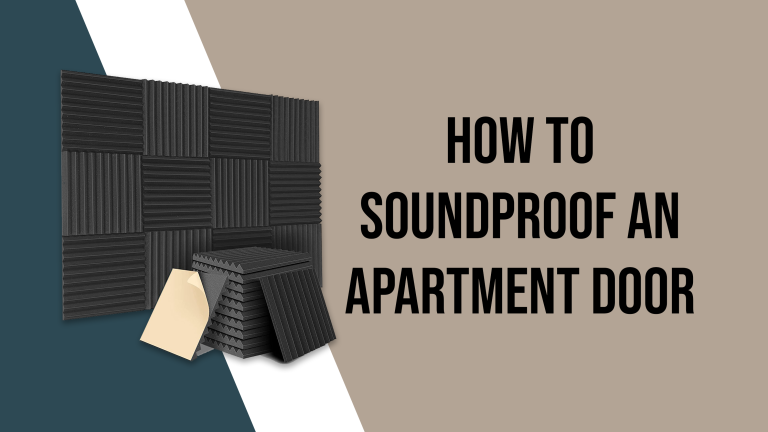The Ultimate Guide About Soundproof Rubber Matting
Soundproofing has become an essential aspect of modern living, especially in urban areas. Whether it’s for a home, office, or studio, soundproofing helps reduce the impact of unwanted noise from the surrounding environment.
One effective way to soundproof a space is by using rubber soundproof. In this article, we will discuss everything you need to know about these anti vibration mat, its benefits, and how to install it.
You can Soundproof Box For Oxygen Concentrator. You may also want to know about Hexagon Soundproof Panels and Soundproof Box For Radon Fan.
Soundproof Rubber Matting
Rubber flooring sound absorption mat is effective at reducing noise transmission and is commonly used in various settings, including residential homes, offices, and studios. rubber flooring sound absorption
What is Soundproof Rubber Matting?
It is a type of material that helps reduce noise transmission. It is a thick rubber soundproofing mat that is designed to absorb sound waves and vibrations, making it an ideal material for soundproofing floors, walls, and ceilings. This material is available in various thicknesses, and it can be cut to size to fit any space.
It is also known as acoustic rubber matting.
Benefits of Soundproof Rubber Matting:
Using these rubber soundproofing offers many benefits, some of which include:
Reduces Noise:
One of the primary benefits of soundproof rubber matting is that it helps reduce noise transmission. The thick rubber material absorbs sound waves and vibrations, making it an effective sound barrier.
Easy to Install:
Soundproof rubber matting is relatively easy to install, and it can be cut to size to fit any space. It requires no special tools or equipment, and it can be installed in a matter of hours.
Versatile:
Soundproof rubber matting can be used to soundproof floor tiles, walls, and ceilings. It can also be used in a variety of settings, including homes, offices, studios, and more.
Durable:
This sound absorbing mat is a durable material that can withstand heavy foot traffic and other wear and tear. It is also resistant to moisture and mildew, making it ideal for use in areas with high humidity.
Affordable:
Rubber soundproofing is an affordable soundproofing solution compared to other soundproofing materials.
How to Install Soundproof Rubber Matting:
Installing sound absorbing mat is relatively easy and can be done in a few simple steps.
Step 1: Clean the Surface
Before installing the soundproof rubber matting, make sure the surface is clean and free of debris. Use a broom or vacuum to remove any dust or dirt.
Step 2: Measure the Area
Measure the area where you want to install the soundproof rubber matting. Use a tape measure to get an accurate measurement.
Step 3: Cut the Matting
Cut the soundproof rubber matting to size using a sharp utility knife. Make sure the matting is slightly larger than the area you want to cover.
Step 4: Install the Matting
Place the soundproof rubber matting on the surface and press it down firmly. Make sure there are no air pockets or gaps.
Step 5: Secure the Matting
Use adhesive tape or glue to secure the edges of the soundproof rubber matting. This will prevent it from shifting or moving.
Where to Use Soundproof Rubber Matting:
These acoustic mats can be used in a variety of settings, including:
Homes:
Acoustic mats can be used for floor soundproofing, walls, and ceilings in homes. It is particularly useful for bedrooms, home theaters, and offices.
Offices:
Soundproof rubber matting can be used to soundproof walls and floor soundproofing in offices, also soundproof wooden floors. It can help reduce noise from neighboring offices or outside.
How Soundproof Rubber Matting Works:
Soundproof rubber matting works by absorbing sound waves and vibrations. When sound waves hit the rubber material, they are converted into heat energy, which is then dissipated through the matting. The thickness of the rubber material determines how much sound it can absorb. Thicker mats are more effective at reducing noise transmission.
Types of Soundproof Rubber Matting:
There are two main types of soundproof rubber matting: closed-cell and open-cell.
- Closed-cell matting is a denser material that offers better sound insulation. It is also more durable and resistant to moisture and mold. Closed-cell mats are commonly used in high-traffic areas, such as offices and commercial buildings.
- Open-cell matting is a lighter and more flexible material that offers good sound insulation. It is also easier to cut and install than closed-cell matting. Open-cell mats are commonly used in residential settings, such as bedrooms and home theaters.
Factors to Consider When Choosing Soundproof Rubber Matting:
When choosing soundproof rubber matting, there are several factors to consider:
Thickness:
The thicker the matting, the more effective it will be at soundproofing.
Density:
Higher density mats offer better sound insulation but are also more expensive.
Material:
Closed-cell matting is more durable and resistant to moisture, while open-cell matting is lighter and more flexible.
Installation:
Consider how easy the matting is to install and whether you need to hire a professional.
Cost:
Soundproof rubber matting is an affordable soundproofing solution, but the cost can vary depending on the thickness, density, and material.
What is DB Matting?
DB matting, also known as decibel matting, is a type of soundproofing material that is designed to reduce noise transmission. It is typically made from a combination of rubber and cork or other materials that absorb sound waves and vibrations. DB matting is effective at reducing airborne and impact noise, and it can be used in various applications, such as acoustic underlay for flooring, behind drywall, or as a layer between walls. The effectiveness of DB matting depends on the thickness and density of the material, as well as the installation method.
FAQ’s
Is rubber matting good for soundproofing?
Rubber matting is good for soundproofing because it can absorb sound waves and vibrations. The thickness and density of the rubber material affect how much sound it can absorb.
Is foam or rubber better for soundproofing?
Foam and rubber can both be effective for soundproofing, but which material is better depends on the specific application. Foam is often used for its sound absorption properties, while rubber is better for sound isolation and vibration damping.
Do soundproofing pads work?
Yes, soundproofing pads can work to reduce noise transmission by absorbing sound waves and vibrations. However, the effectiveness of the pads depends on factors such as the type and thickness of the material, as well as the installation method.
Does rubber foam block sound?
Rubber foam can block some sound, but its primary function is to absorb sound waves and vibrations. Closed-cell rubber foam is better for blocking sound than open-cell foam.
What is the most effective soundproofing?
The most effective soundproofing methods involve a combination of techniques, such as using multiple layers of soundproofing materials, sealing air leaks, and adding mass to walls and to soundproof floor tiles.
What can I put on floor to reduce noise?
You can put various materials on the floor to reduce noise, including rubber mats, carpet, cork, and acoustic underlayment.
Which material is better for soundproofing between rooms?
Solid materials, such as concrete or brick, are better for soundproofing between rooms because they are denser and less likely to transmit sound. Other effective materials include mass loaded vinyl and soundproof drywall.
What can I use instead of soundproof?
Instead of soundproofing, you can try sound absorption techniques such as adding acoustic panels, drapes, or other soft materials to absorb sound waves.
Does soundproofing block outside noise?
Soundproofing can help block outside noise, but it depends on the level of noise and the effectiveness of the soundproofing method. Adding mass and density to walls and windows can help block outside noise.
Does soundproofing absorb sound?
Yes, soundproofing can absorb sound waves and vibrations, which helps to reduce noise transmission.
Can sound travel through rubber?
Sound can travel through rubber, but the amount of sound that passes through depends on the thickness and density of the rubber material.
What materials can block sound?
Materials that are dense and have mass, such as concrete, brick, or mass loaded vinyl, can block sound.
What materials can absorb sound?
Materials that are porous and soft, such as acoustic foam, fiberglass, or cork, can absorb sound waves and reduce noise transmission.
Conclusion:
Soundproof rubber matting is an effective and affordable way to soundproof your home, office, or studio. It offers many benefits, including noise reduction, easy installation, versatility, durability, and affordability. By choosing the right thickness, density, and material, you can significantly reduce noise transmission and create a more peaceful environment.








